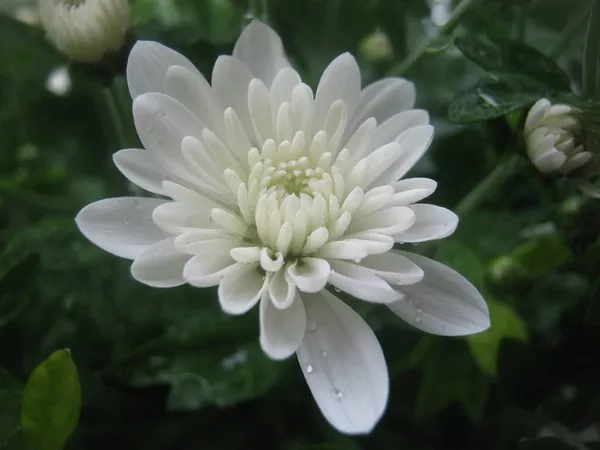Drying flowers is an art that allows us to capture and preserve the beauty of blooms long after their natural life cycle. Among the various techniques available, drying flowers flat is a popular and effective method. This process not only retains the shape and color of the flowers but also allows for creative applications in crafts and home décor.
Choosing the Right Flowers
Before diving into the drying process, it’s essential to select the right flowers. Not all flowers are suitable for drying, and some may retain their color and shape better than others. Opt for flowers that are freshly bloomed and free from blemishes or damage. Varieties like roses, daisies, and pansies are known for their suitability for drying, as they hold their form and color well during the drying process.
Harvesting at the Right Time
Timing is crucial when harvesting flowers for drying. The optimal time to harvest flowers is in the morning, after the dew has evaporated but before the heat of the day sets in. This is when flowers are at their peak freshness. Use sharp scissors or pruning shears to make clean cuts, and ensure that the stems are of a manageable length for the drying process. Harvesting at the right time contributes to the overall success of drying flowers flat.
Preparing the Flowers
Once flowers are harvested, it’s important to prepare them for the drying process. Remove any excess foliage or leaves from the stems, as these can contribute to mold during drying. Trim the stems to the desired length, keeping in mind the intended use of the dried flowers. For flat drying, it’s often best to leave a moderate stem length for handling and arranging.
Choosing a Drying Location
Selecting an appropriate drying location is crucial to the success of drying flowers flat. The chosen area should be well-ventilated and relatively dark, as direct sunlight can cause fading. Ensure that the humidity is low to prevent mold growth during the drying process. A room with good air circulation, such as a dry basement or an airy attic, is an ideal location for drying flowers flat.
Drying Flowers Flat with Pressing
Prepare a Press:
To dry flowers flat using the pressing method, you’ll need a flower press. Flower presses are available in various sizes and designs, but a simple press with wooden slats and bolts is sufficient for most purposes. Ensure that the press is clean and dry before use.
Layer the Flowers and Paper:
Take two sheets of absorbent paper, such as blotting paper or parchment paper. Place the paper on one of the wooden slats of the press. Arrange the flowers on the paper in a single layer, ensuring that they don’t overlap. The way you arrange them will influence their final appearance, so experiment with different layouts.
Add More Layers:
Once the first layer is complete, add another sheet of absorbent paper on top of the arranged flowers. Continue layering flowers and paper until the press is full or you’ve processed all the flowers you want to dry.
Tighten the Press:
Carefully tighten the bolts of the press to apply even pressure to the flowers. The pressure helps remove moisture from the flowers and facilitates the flattening process. Be cautious not to overtighten, as this could damage delicate flowers.
Allow Sufficient Drying Time:
Place the press in the chosen drying location and allow the flowers to dry for a few weeks. The exact drying time can vary depending on factors such as the type of flowers, humidity levels, and the thickness of the flowers. Check the progress periodically and adjust as needed.
Alternative Method: Drying Flowers Flat Without a Press
Prepare Heavy Books:
If you don’t have a flower press, an alternative method involves using heavy books. Choose large, heavy books with clean, smooth pages. Line the pages with parchment or absorbent paper to protect the flowers and the book.
Place the Flowers in the Book:
Arrange the flowers between the pages of the book, leaving enough space between them to prevent overlap. Ensure that the flowers are not too close to the book’s spine to allow for even drying.
Add Weight on Top:
Once the flowers are placed in the book, add additional weight on top. You can use more books, heavy objects, or even stack books on top of each other for added pressure. This mimics the pressing process, helping to flatten and dry the flowers.
Patience is Key:
Close the book and place it in the chosen drying location. Allow the flowers to dry for several weeks, checking their progress periodically. The weight and absorbent paper aid in the drying process, resulting in flat, preserved flowers.
Finishing Touches
After the drying period, carefully remove the pressed flowers from the press or book. Handle them gently to avoid breakage. The dried flowers can be used in various crafts, such as creating pressed flower art, bookmarks, or incorporating them into homemade greeting cards.
Storing Dried Flowers
Proper storage is essential to maintain the quality of dried flowers. Place the dried flowers in a cool, dry place away from direct sunlight. Consider storing them in airtight containers or sealable plastic bags to protect them from dust and humidity. When stored correctly, dried flowers can retain their beauty for an extended period.
Conclusion
Drying flowers flat is a captivating and practical way to preserve the fleeting beauty of blooms. Whether you choose to use a traditional flower press or opt for the simplicity of heavy books, the process allows you to create charming and timeless pieces of art. Experiment with different flowers, arrangements, and drying times to discover the endless possibilities of flat-dried flowers. With a bit of patience and creativity, you can enjoy the enduring beauty of your favorite blossoms in a variety of decorative and artistic endeavors.


